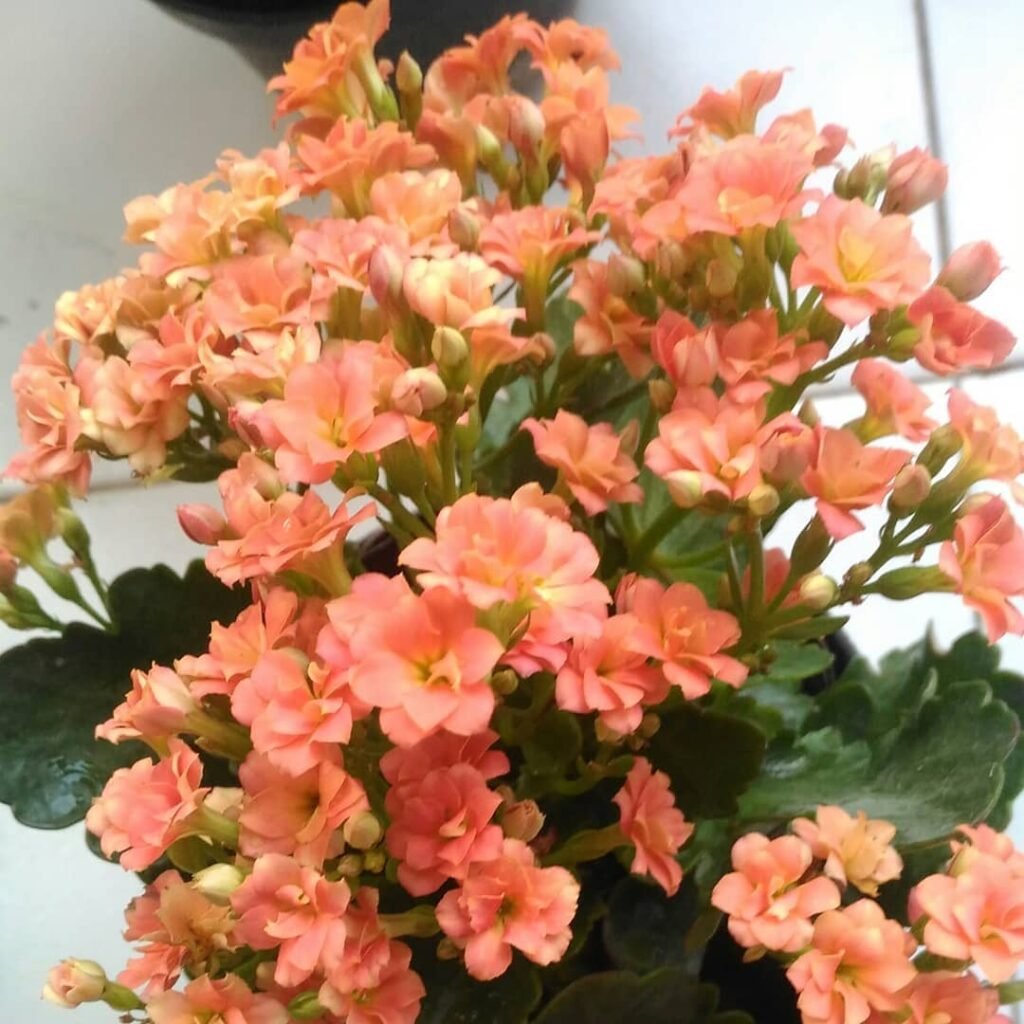Learn how to grow and care for Calandiva, a vibrant plant known for its colorful blooms. Discover essential tips for planting, maintenance and making the most of this beautiful indoor flower.
Calandiva, also known as Kalanchoe blossfeldiana, is a stunning flowering plant that has become increasingly popular among indoor gardeners. With its vibrant blooms and relatively easy care requirements, it’s no wonder this plant has captured the hearts of many plant enthusiasts.
Here’s a concise and verified information chart for Calandiva:
| Category | Details |
|---|---|
| Botanical Name | Kalanchoe blossfeldiana |
| Common Name | Calandiva |
| Plant Type | Succulent perennial |
| Hardiness Zone | 9-11 (USDA) |
| Sun Exposure | Bright, indirect light |
| Soil Type | Well-draining, sandy or loamy soil |
| Watering | Water sparingly; allow soil to dry out between waterings |
| Growth Habit | Compact, rosette-forming |
| Height/Spread | Height: 6-12 inches (15-30 cm); Spread: 6-12 inches (15-30 cm) |
| Special Features | Long-lasting, colorful flowers; glossy, fleshy leaves |
What is Calandiva?

Calandiva is a cultivar of the Kalanchoe genus, belonging to the Crassulaceae family. It’s known for its:
- Thick, succulent-like leaves
- Long-lasting, colorful flowers
- Compact growth habit
These plants are often sold as gift plants due to their attractive appearance and ability to bloom for extended periods.
Origins and Characteristics
Origins
Kalanchoe plants are native to Madagascar, but the Calandiva cultivar was developed by breeders to enhance certain desirable traits. The name “Calandiva” is actually a trademark name for a specific series of double-flowered Kalanchoe plants.
Characteristics
- Flower Colors: Range from white, pink, and red to orange and yellow
- Bloom Time: Can flower for up to six weeks
- Size: Typically grows to about 8-12 inches tall and wide
- Leaves: Thick, waxy, and dark green
How to Grow Calandiva

Growing Calandiva can be a rewarding experience. Here’s what you need to know:
Light Requirements
Calandiva thrives in bright, indirect light. While it can tolerate some direct sunlight, too much can scorch the leaves. An east-facing window is often ideal.
Soil and Potting
Use a well-draining potting mix designed for succulents or cacti. Good drainage is crucial to prevent root rot.
Watering
Water your Calandiva when the top inch of soil feels dry. These plants are susceptible to overwatering, so it’s better to err on the side of underwatering.
Temperature and Humidity
- Ideal Temperature: 60-75°F (15-24°C)
- Humidity: Can tolerate average indoor humidity levels
Fertilizing
Feed your Calandiva every two weeks during the growing season with a balanced, water-soluble fertilizer diluted to half strength.
Calandiva Care Tips
Pruning
After the blooming period, prune back the spent flower stalks to encourage bushier growth and potentially more blooms in the future.
Repotting
Repot your Calandiva every 1-2 years or when it outgrows its current pot. Choose a container that’s only slightly larger than the current one.
Pest and Disease Management
While generally resistant, Calandiva can sometimes fall prey to:
- Mealybugs
- Aphids
- Fungal diseases (if overwatered)
Regular inspection and proper care can help prevent most issues.
Encouraging Reblooming
Calandiva is known for its ability to rebloom with proper care. To encourage reblooming:
- Provide a period of darkness: After the blooming period, give your plant 14-16 hours of complete darkness each day for about 6 weeks.
- Reduce watering and stop fertilizing during this time.
- Once you see new buds forming, resume normal care.
Calandiva vs. Other Kalanchoe Varieties
While Calandiva is a type of Kalanchoe, it has some distinct features:
- Double flowers (compared to single flowers in many Kalanchoe varieties)
- Often more compact growth habit
- Generally longer-lasting blooms
Decorating with Calandiva
Calandiva’s vibrant blooms make it an excellent choice for adding color to your home. Consider:
- Using it as a centerpiece on dining tables
- Grouping it with other plants for a mini indoor garden
- Placing it in bathrooms or kitchens for a pop of color
Common Problems and Solutions
Yellow Leaves
Possible causes: Overwatering or nutrient deficiency Solution: Adjust watering schedule and consider fertilizing
Flower Drop
Possible causes: Sudden temperature changes or drafts Solution: Keep the plant away from cold drafts and maintain a consistent temperature
Leggy Growth
Possible cause: Insufficient light Solution: Move the plant to a brighter location
Calandiva is a beautiful and relatively low-maintenance plant that can bring vibrant color to your indoor space. With proper care, including appropriate light, water, and occasional pruning, your Calandiva can thrive and rebloom year after year. Whether you’re a seasoned plant parent or a beginner, this charming flowering plant is sure to be a delightful addition to your home.
Gardening Know How – Calandiva Care
The Spruce – Growing Kalanchoe Plants
Gardeners’ World – How to Grow Kalanchoe